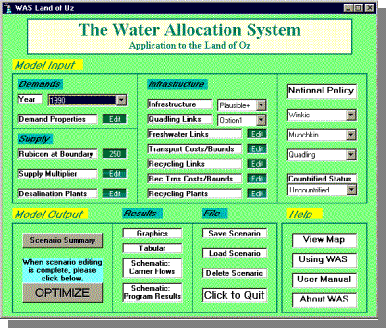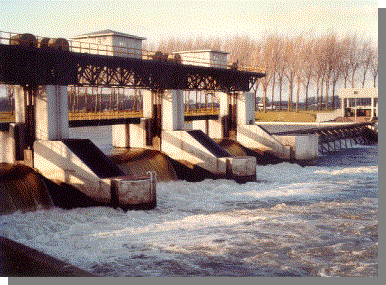

The
Water Allocation System is a user
friendly decision support tool for the analyses of regional water allocation in
a social and economic context. The
region is divided into a number of districts. Each district is treated as a
separate economic unit. Economic
activities, production, consumption, prices, and welfare are measured separately
for each district. The only
commodity in the tool is water. WAS accounts for surface water and ground water
resources, where for each resource different water qualities can be taken into
account.
The present version of WAS is based on average annual quantities.
If appropriate, development of inter-seasonal or multi-year tools will be
undertaken as part of future projects. Water
is used for many different purposes (e.g. households, industry, agriculture,
power and the environment). In the model, the water demand of each
private user category is characterized by a relation between price and quantity
(demand curve).
Recycling of effluent from public water supply to irrigation can be taken
into account. For the determination of the demand curve for agriculture an
Agricultural Sub-Model (AGSM) is available (see below).
The movement of water between districts can be viewed as trade between districts. In the model, users can specify conveyance links. A link is characterized by a district of origin and destination, a capacity and a transport cost in $/m3.

The Water Allocation System (WAS) can be used for water management and/or conflict resolution among parties sharing a common water resource.
WAS can be used to evaluate current and future water management issues. It is important to note that such evaluation is system-wide. In particular, it takes account of the opportunity cost of water everywhere in the studied region. Possible applications include:
Infrastructure evaluation, both capacity and timing
Cost benefit analyses of both infrastructure and policies
Evaluation of new supplies
Planning for drought conditions
Value of improving existing infrastructure, e.g. leakage problems
Costs of environmental policies and regulations
Main Page | Introduction | Concept | AGSM | Conflict Resolution | CRA